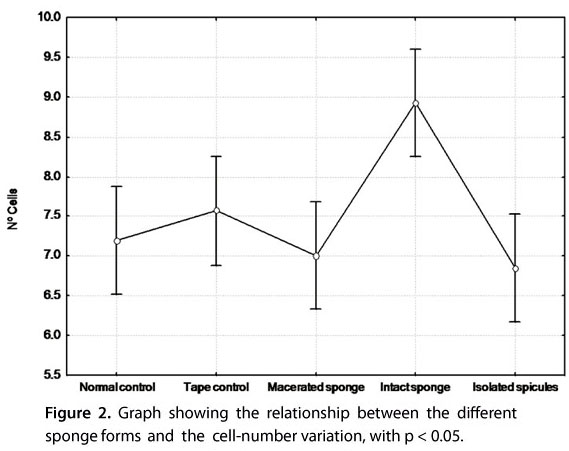Freshwater sponges are abundant in the Amazon region and they have been known to cause dermatitis (acute inflammation) since the beginning of the 20th century. To determine whether additional constituents, besides their body spicules, cause dermatological reactions in humans, an experimental study was developed and carried out using mice and Drulia uruguayensis prepared in three different forms: intact sponges (IS), macerated sponges (MS) or isolated spicules - megascleres (ISM). The cells most commonly involved in inflammatory reactions (mast cells, eosinophils and neutrophils), as well as intraepithelial lymphocytes and degranulated mast cells, were counted so that they could be used as parameters to determine which of the sponge preparations induced the greatest reaction. The effects of the sponge on the skin were then determined by histological analysis. The results obtained showed that IS caused the greatest inflammatory reaction (p = 0.000005), activating mainly mast cells (p = 0.0018). The histopathological analysis revealed a slight loss of continuity of the epidermis when ISM or IS were applied. These findings allow us to conclude that a structurally intact sponge can cause a greater inflammatory reaction in the first contact because of its ability to perforate the skin and allow inflammatory agents to enter. Other proteins present in dried sponge bodies could induce allergic but not toxic responses (in contact with the entire sponge, a large number of pharmacologically inert proteins may be introduced, with a potential allergen).
dermatitis; Amazonia; cauixi; freshwater sponges



